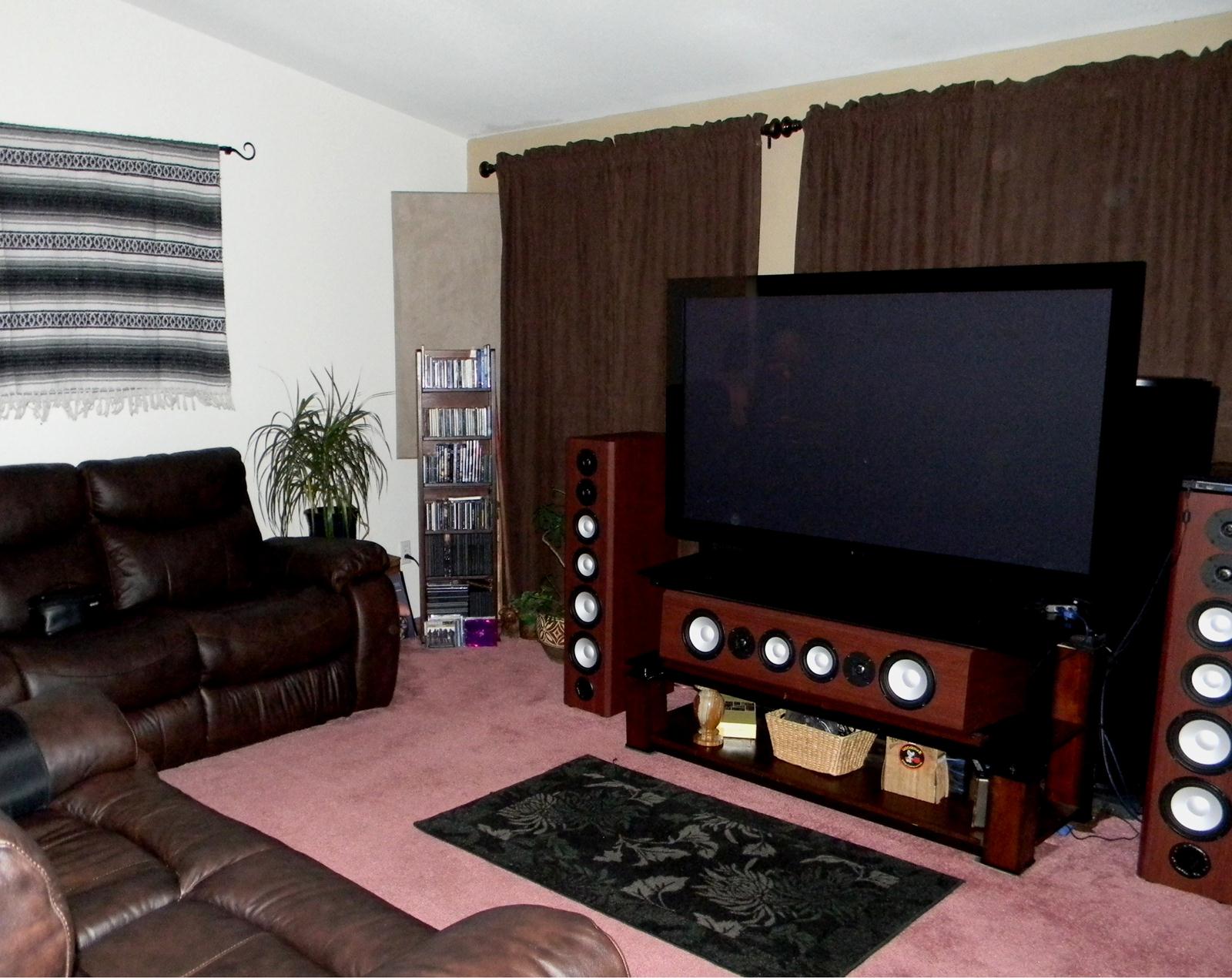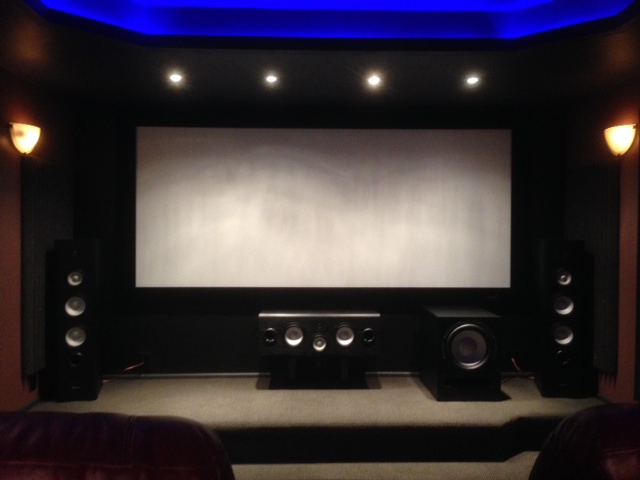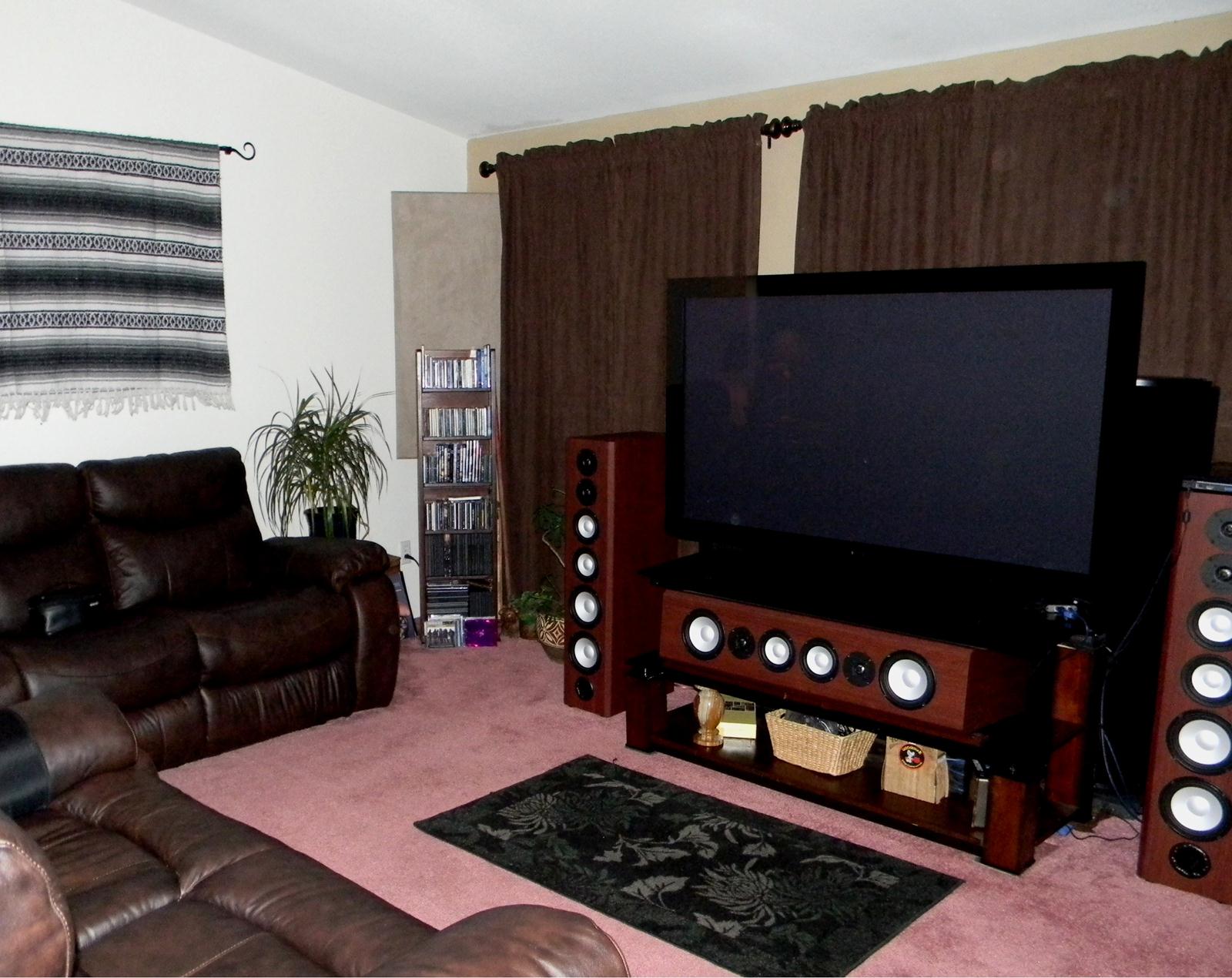
Home theater is this season's hottest trend! But what should you beware of when you purchase or upgrade a home theater? We've come up with a list of the Top Ten Mistakes people make when they buy home theaters. Remember, if you have any questions about a purchase when you've read the article, feel free to send me an e-mail.
1. Be cautious about those all-inclusive home-theater-in-a-box surround-sound systems from big brand name manufacturers noted for making great TV sets and audio/video receivers. That incredibly low price may be a false economy. If ________ (fill in Sony, Kenwood, any major electronics brand) knows how to build CD players, audio/video receivers, or TV monitors, they must know how to design and build excellent loudspeakers, right?
Wrong. Good speaker design is so specialized and requires such extensive acoustical research, measurement, and listening tests that the best speakers continue to come from companies like Axiom that specialize in the design and manufacture of loudspeakers.
2. Take your time, and listen to speakers using several of your favourite recordings. Experienced listeners and professionals will tell you that making careful judgments on different speakers takes many hours of listening, so don't be rushed. Use the same recordings of music you like for an objective comparison. If you have the option of auditioning the speakers in your own home, so much the better. That's the room where the speakers you buy will be placed, and there's no better place to listen to speakers than in the room you'll use them in.
3. Don’t be seduced by those little cube speakers because they're so tiny and unobtrusive. They may look cute and almost disappear into your room's decor, but those tiny satellite speakers can move only so much air. When things start to get loud with rock and roll or movies or big symphonic works, those little 2-inch cones inside get rattled and edgy.
Any speaker with a claim to high fidelity must divide the sound spectrum into two ranges, the bass/midrange for the woofer, and the treble for the tweeter. A single cone just can't do it well in normal rooms. As the price spectrum climbs, the best speakers divide the spectrum into three parts--bass, midrange, and treble--and use multiple drivers to achieve very clean high-quality sound.
4. Be realistic about the size of the room where you’ll use the speakers. Inexpensive small "bookshelf" speakers are great for rooms of modest dimensions. But if you get them for your 40- x 25-foot cathedral-ceiling living room, they’ll sound strained and edgy every time you turn up the volume.

A speaker is a kind of electrical air pump, and a modest single woofer and tweeter can't be expected to fill a huge room with wide-range sound at high listening levels. Bigger spaces require larger speakers.
5. Don’t expect compact speakers to produce deep, resonant thrilling bass. You can get pleasant usable bass to about 50 or 40 Hz from a compact bookshelf speaker, but if you want the deep and powerful sounds from a rock band or symphony orchestra, or the deep rumbling of a movie blockbuster, get a subwoofer to use alongside your compact speakers. Alternatively, get larger tower speakers.
6. Don’t be distracted by deep bass from a big subwoofer. (The subwoofer is a large black box dedicated to just deep powerful bass.) Instead, focus on whether the sounds from the main left and right stereo speakers and the center channel are smooth and clear without being harsh or strident.
Sure, deep bass from a subwoofer is desirable, but with movies or music, most of those upper bass, midrange and high-frequency sounds will come from the left and right front speakers and the center channel. Listen carefully to actors' and singer’s voices: Do they sound "boxy" or unnatural or hollow? Are "ssss" sounds at the beginning of words exaggerated (called sibilance), or sharp sounding? Do male actors sound nasal or if they had a head cold? Or are their voices "chesty" and too full? These are called speaker "colorations"--unnatural changes in the tonality of voices introduced by the loudspeaker, and they'll become tiresome and annoying after a short time.
7. Buy enough power—amplifier watts—to suit the size of your room, your listening tastes, and the demands of the speakers. Watts are comparatively inexpensive nowadays, but lots of receivers and amplifiers are still advertised using the misleading "total power output" ruse, which totals the individual power for all five channels. That "200-watt" receiver may have only 40 watts per channel (40 x 5 = 200), which would be adequate in a den or a dorm room but not enough for good home theater in an average-size living room.
Look for the receiver's power output stated per channel into 8 ohms at a specified distortion level, preferably with at least two channels driven. Receivers with power output of 70 to 100 watts per channel will be ample for all but the largest homes.
8. Be circumspect about speaker brand names that may sound sort of familiar, like "Sonic Research." Typically, such speaker manufacturers choose names with a slightly familiar ring, but the products are often disappointing. Some even have tweeters or woofers that aren't even connected. The best speakers come from dedicated speaker designers who have been in business for 20 years or more. It takes that long to refine and develop really great loudspeakers.
9. Don’t let your spouse or companion persuade you to hide your new speakers inside an antique armoire or entertainment unit. Why buy really good speakers if you're going to place them inside shelving units or armoires? It's the old law of boundary effects. The more surfaces near a speaker, the greater the likelihood of unpleasant sound colorations occurring. A speaker needs to operate more or less in free space. Smaller speakers sound their best on stands. Leave the armoire for electronics and storing CDs!
10. Check out detailed speaker test reports and reviews in reputable audio/video magazines and on Internet forums. Read message boards for owner's comments on particular brands and models of speakers. Ask questions about the quality and type of the individual component parts. And don't fall for the slick ads for package systems from famous-name manufacturers that spend millions on promotion and little on research and design. Sad to say, some companies use the cheapest possible cone drivers, diverting most of their profits not to research and development of better sounding speakers, but to getting manufacturing costs to basement levels. The systems ultimately disappoint; indeed, in some cases the basic design hasn't changed in 30 or 40 years. But the ads are very compelling.






